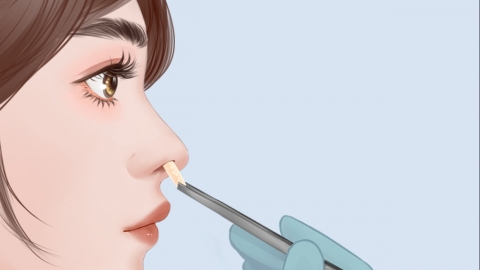The rib nasal prosthesis is placed in which position?
Generally speaking, "rib nose" refers to nasal augmentation using costal cartilage grafting, which involves transplanting the patient's own costal cartilage. The usual reference price for costal cartilage nasal augmentation ranges from 10,000 to 50,000 yuan per session, with visible improvement typically seen within 7 to 10 days. On the other hand, ePTFE (expanded polytetrafluoroethylene) is a type of material that can be transplanted when the results of costal cartilage nasal augmentation are unsatisfactory. The usual reference price for ePTFE nasal augmentation ranges from 8,000 to 15,000 yuan per session, with visible improvement generally observed within 7 to 14 days. Postoperatively, symptoms such as congestion and edema may occur. Where ePTFE is placed after costal cartilage nasal augmentation mainly depends on the specific nasal depression condition. If there is depression at the nasal tip, the ePTFE can be grafted to this area. If the depression is along the nasal bridge, then the ePTFE can be placed there. Detailed explanations are as follows:

If there is some depression at the nasal tip, and the nasal tip appears to be droopy or insufficiently full after costal cartilage nasal augmentation, ePTFE can be placed at the nasal tip to reshape it, making the nasal tip fuller, more upright, and better defined.
However, if the nasal bridge remains flat or depressed after costal cartilage nasal augmentation, ePTFE might need to be implanted along the dorsum of the nose to improve the shape of the nasal bridge, making the overall nose appear more defined and three-dimensional. This also helps enhance the nasal bridge height, resulting in a more aesthetically pleasing appearance.
It should be noted that if the outcome of costal cartilage nasal augmentation is unsatisfactory and ePTFE implantation is being considered, it is recommended to first consult with a physician and proceed according to their instructions. Additionally, postoperative care of the surgical site is important, including avoiding frequent touching with the hands.




